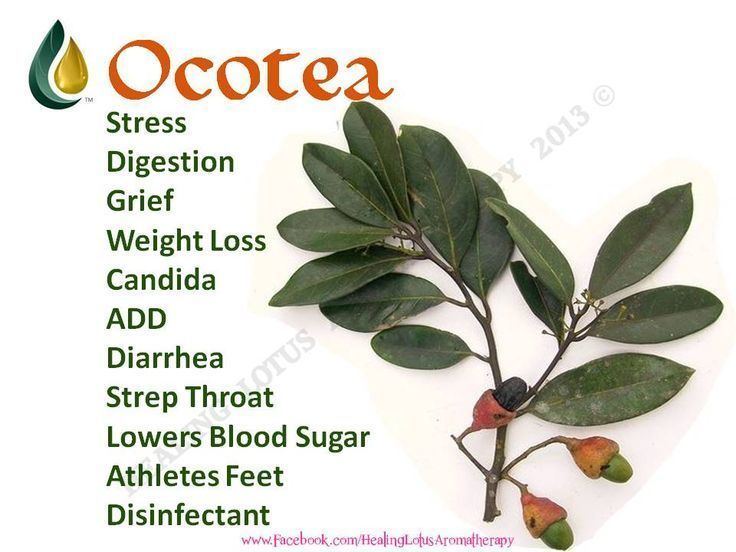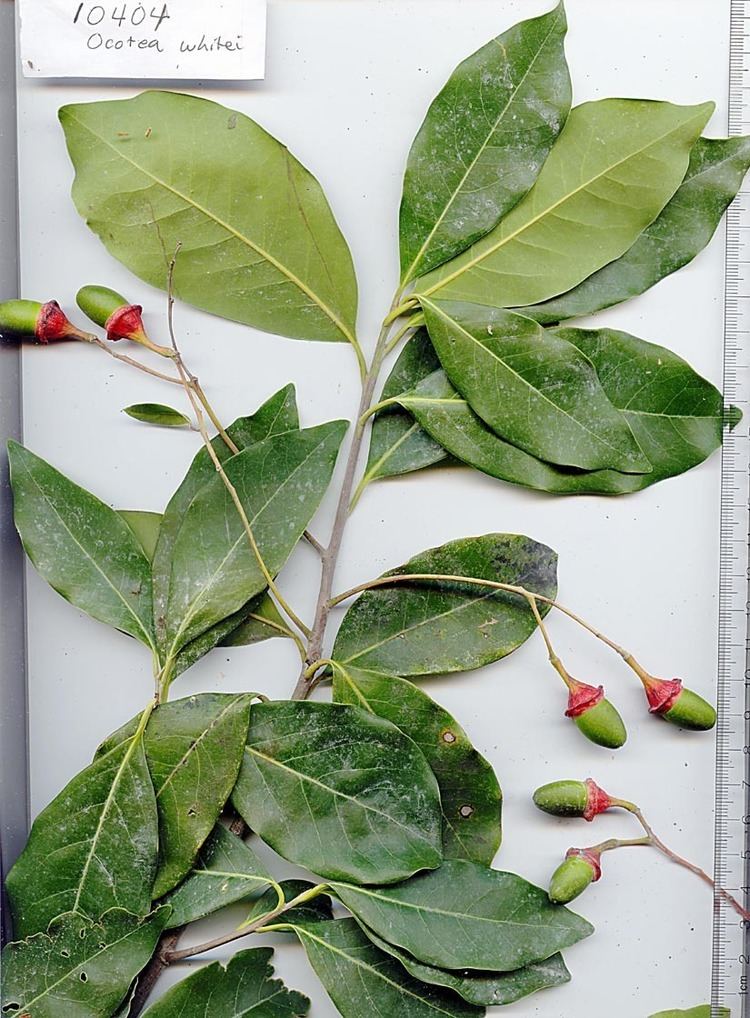Scientific name Ocotea Rank Genus | ||
 | ||
Lower classifications Ocotea porosa, Ocotea odorifera, Ocotea foetens, Ocotea quixos, Ocotea catharinensis | ||
Ocotea is a genus of flowering plants belonging to the family Lauraceae. Many are evergreen trees with lauroid leaves.
Contents
There are 324 species currently accepted within the genus, distributed mostly in tropical and subtropical areas of the Americas (around 300 species) including the Caribbean and West Indies, but also with some species in Africa, Madagascar and the Mascarene Islands. One species (O. foetens) is native to the Macaronesia (in Canary Islands and Madeira).

Ocotea
Description

They are trees or shrubs, occasionally with adventitious roots (O. hartshorniana, O. insularis). Leaves simple, alternate, rarely opposite or whorled. The leaves are lauroid, they are commonly dark green glossy with sometimes brown on the underside and fragrant oil cells.

The African and Madagascan species all have bisexual flowers (possessing both male and female parts), whereas many of the American species have flowers that are unisexual (either male or female). The apetalous flowers are in small panicles.
The fruits are globose or oblong berries, 3–5 cm in length, hard and fleshy and at the junction of the peduncle part with the fruit covered by a cup-shaped, occasionally flat, cupule, giving them an appearance similar to an acorn. The fruit is dark green, gradually darkening with maturity. The cupule at the base of the berry, can be more brightly colored. The fruit has a single seed wrapped in a hard coat and can be slightly lignified.
Names
The genus has no standard common name. Names often refer to the aroma of the wood, which can be strong and not always pleasant. Sweetwood is usually applied only to this genus, although many names are also applied to this genus and other genera:
The common names of some species refer to their similarity to other Lauraceae such as Sassafras (Brazilian sassafras: O. odorifera) or Laurus (Cape laurel: O. bullata, Sword laurel: O. floribunda, Guaika laurel: O. puberula, etc.).
Ecology
Ocotea species are distributed in subtropical and tropical regions, often at higher altitudes. They are characteristic plants of many tropical montane habitats such as Araucaria moist forests, Laurisilva, Afromontane biomes, Knysna-Amatole montane forests and Talamancan montane forests, although in Madagascar they also occur in lowland forests. Most relatively small fruit species are of great environmental importance because they are the food of many endemic birds and mammals, especially in Islands, and premontane and montane forests. The leaves of Ocotea species are the food source for the caterpillars of several species of endemic Lepidoptera, including several species of Memphis. Some Memphis caterpillars feed solely on the leaves of one species of Ocotea; for example M. mora feeds only on O. cernua, and M. boisduvali feeds only on O. veraguensis
Seed distribution of some Ocotea species is performed by frugivorous birds such as toucans, the three-wattled bellbird (family Cotingidae), quetzal and Cape parrot. Ocotea fruit is also consumed by several Columbiformes such as Columba trocaz, Delegorgue's pigeon, Bolle's pigeon (Columba bollii), African wood pigeon, and American doves.
Most of the African tree species are ancient paleoendemic species, which in ancient times were widely distributed on the continent. This is not the case in the Americas: 89 species have been collected in Venezuela alone.
Species of Ocotea can be attacked by various rot-inducing root pathogens, including Loweporus inflexibilis, Phellinus apiahynus and Phytophthora cinnamomi.
Some Ocotea species are used as nesting sites by ants, which may live in leaf pockets or in hollowed-out stems. The ants patrol their host plants more frequently in response to disturbance or to the appearance of insect pests such as grasshoppers.
Uses
Ocotea produce essential oils, which are rich in camphor and safrole. East African camphorwood (O. usambarensis), Peruvian rosewood (O. cernua) and Brazilian sassafras (O. odorifera) are traded internationally.
Dried fruit cupules of ishpingo (O. quixos) are used in Ecuador to flavor beverages, such as colada morada.
Some fast growing Ocotea tree species are harvested commercially for timber. These include O. puberula, O. bullata (black or true stinkwood) and O. usambarensis. The timber is valued for its resistance to fungal decay.
O. odorifera (Brazilian sassafras) and O. kuhlmanni are frequently used as honey plants.
Selected species
The following are some of the species of Ocotea. Distinguishing Ocotea species from Nectandra and other close relatives is problematic. Povedadaphne may be better placed in Ocotea.
Formerly placed here
Fossil record
Fossil †Ocotea heerii leaf impressions of Messinian age (ca. 5.7 Ma) have been uncovered in Monte Tondo, northern Apennines, Italy.
